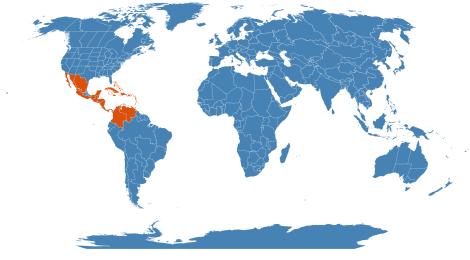Accession Data
Crescentia cujete
Common Name: Calabash Tree
Family: Bignoniaceae
Country of Origin: tropical America
Description: Tree to 40 feet, with spreading branches and broad head; leaves nearly sessile, clustered at nodes, oblanceolate, to 6 inches long; flowers to 2 inches long (cauliflory) corolla yellowish with red or purple veins, lobes lacerate; fruit to 12 inches or more across, smooth, resembling a gourd.
The fruits are widely used as utensils and are used to make musical instruments - Maracas.
Uses: Medicinal Usage: Considered anthelmintic, analgesic, anti-inflammatory, febrifuge, laxative, expectorant.
Accession Data
USDA Zone: 10b-11
Accession #: 199200126
Accession Date: 1992-12-31 00:00:00
Bloom Status: 🪴 Not Flowering
Location: 1318
Quantity: 2
Source: Lyon Arb
Classification
Division: Magnoliophyta
Class: Magnoliopsida
Subclass: euasterid I
Order: Lamiales
Family: Bignoniaceae
Tribe: Crescentieae
References
- Pollination and the Natural History of the Calabash Tree
- The Plant List (2013). Version 1.1. Accessed 17 February 2015.
- WCSP (2015). World Checklist of Selected Plant Families. Facilitated by the Royal Botanic Gardens, Kew. Accessed 17 February 2015
- Philippine Alternative Medicine Last accessed on Wednesday, December 12, 2018.
Images

